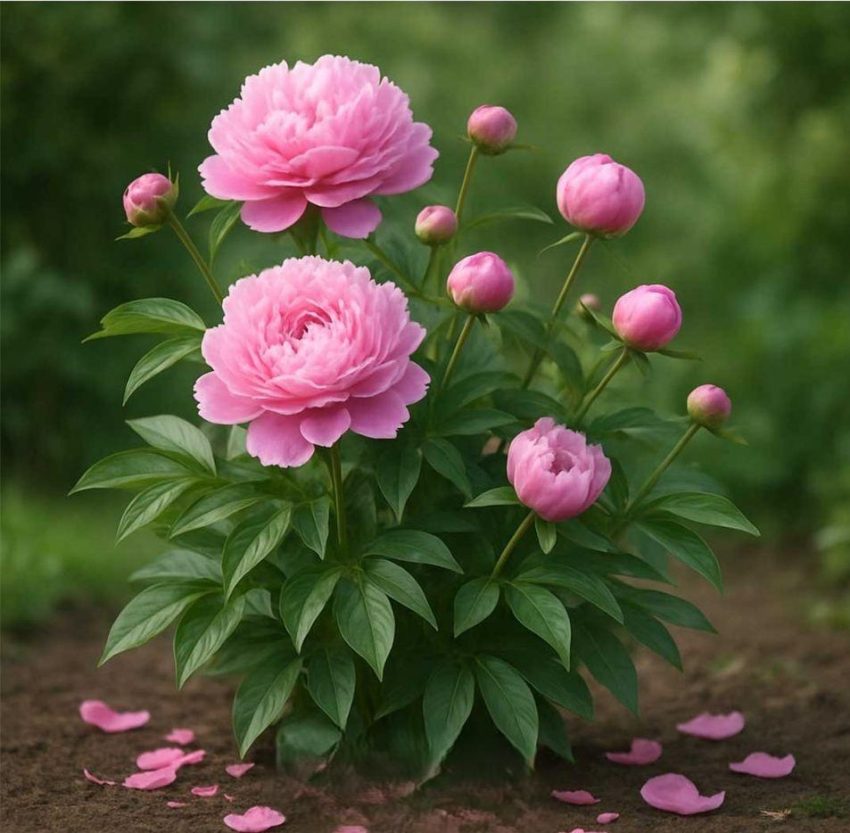ADVERTISEMENT
Post-Bloom Care Steps for Healthy Peonies
Deadheading: Enhance Future Growth
Once your peonies have finished blooming, deadheading is your first course of action. This involves carefully removing spent flowers. By cutting off these flowers, you prevent the plant from wasting energy on seed production. Instead, the energy is redirected towards root development and strengthening the plant for the next growing season. Use sharp, sterilized scissors to cut the blooms just above the leaf node. This practice not only keeps your garden tidy but also helps in promoting bushier growth.
Fertilization: Nourishment for Next Season
After deadheading, consider feeding your peonies with a balanced fertilizer. Peonies are heavy feeders, and applying a slow-release fertilizer will replenish the nutrients that were used up during the blooming period. Opt for a fertilizer with low nitrogen content to avoid excessive leafy growth, which can detract from flower production. Apply the fertilizer around the base of the plant, ensuring you follow the manufacturer’s instructions for the best results.
Watering: Maintain Optimal Moisture
Consistent watering is crucial, especially during dry spells. Peonies require sufficient moisture to develop strong roots and foliage. Ensure the soil is well-draining to prevent waterlogging, which can lead to root rot. A deep watering once a week is typically sufficient, but adjust this based on rainfall and temperature. Mulching around the base can help retain moisture and keep the roots cool.
Pest and Disease Management: Protect Your Blooms
After blooming, it’s vital to inspect your peonies for signs of pests and diseases. Common issues include powdery mildew, botrytis blight, and aphid infestations. If you detect any of these problems, take immediate action using appropriate treatments like fungicides or insecticidal soaps. Regular monitoring and prompt intervention can prevent these issues from escalating and causing damage to the plant.
Pruning: Prepare for Dormancy
As the season progresses into fall, it’s important to cut back peony foliage to ground level. This step helps in preventing overwintering of pests and diseases. Wait until the foliage turns yellow, indicating that the plant is entering dormancy, before cutting back. This timing ensures that the plant has had enough time to store energy in its roots for the next growth cycle.
Dividing: Encourage Robust Growth
Every few years, peonies benefit from being divided, which can reinvigorate the plant and promote more vigorous blooming. The best time to do this is in the fall, after the plant has gone dormant. Gently dig up the plant and use a sharp knife to divide the root clump into sections, ensuring each section has at least 3-5 eyes. Replant the divisions at the same depth they were previously growing, in well-prepared soil.
Mulching: Insulate and Protect
Applying a layer of mulch in the fall can protect peonies from harsh winter temperatures. Mulch acts as an insulator, maintaining consistent soil temperature and moisture levels. Use organic materials like straw, shredded bark, or leaf mold. Spread the mulch evenly around the base of the plant, but avoid piling it directly against the stems to prevent rot.
Conclusion: Cultivating Long-Lasting Beauty
Caring for peonies after they bloom is a crucial aspect of gardening that ensures these stunning flowers return year after year with vigor. By following these essential steps—deadheading, fertilizing, watering, managing pests and diseases, pruning, dividing, and mulching—you set the stage for another season of lush, vibrant blooms. With a little effort and attention to detail, your peonies will continue to be a highlight in your garden, offering beauty and fragrance that captivate the senses. Embrace these practices, and enjoy the rewarding experience of nurturing one of nature’s most cherished flowers.
ADVERTISEMENT


